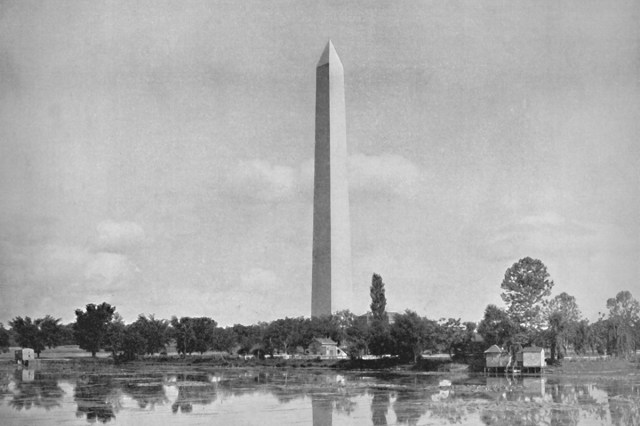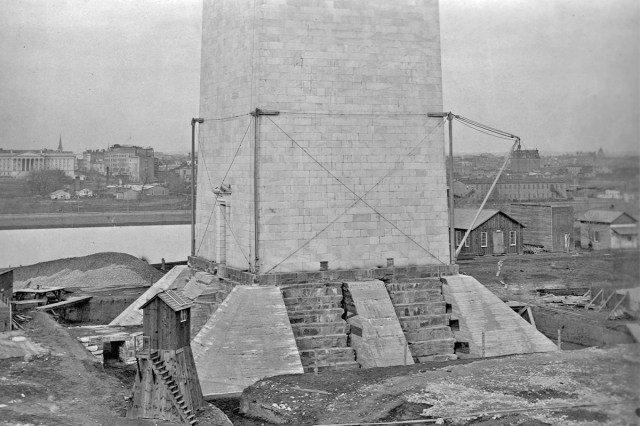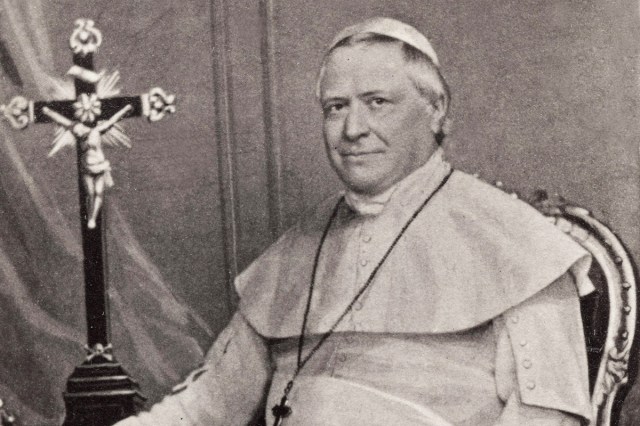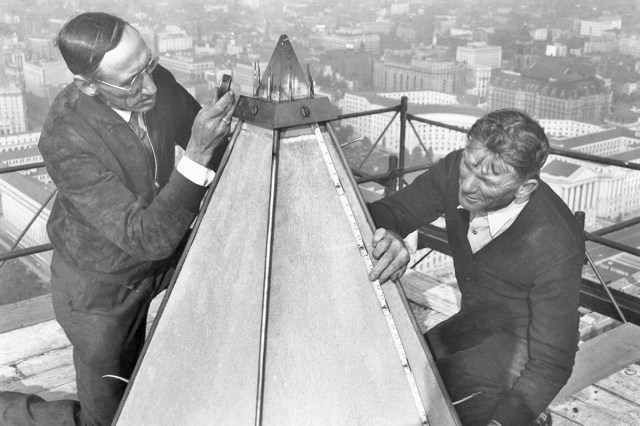
It Was Once the World’s Tallest Structure
After 36 years of construction, the Washington Monument was finally completed on December 6, 1884, clocking in at 555 feet and 5.125 inches tall, making it the world’s tallest building at the time. The obelisk wrested this title from the previous record holder, Germany’s 516-foot-tall Cologne Cathedral, which had been the world’s tallest building since its completion in 1880.
The monument’s time as the world’s tallest structure lasted only five years, as it was soon overtaken by the 1,083-foot-tall Eiffel Tower in 1889. But the Washington Monument remained the tallest human-made monument in the United States until 1939, when the 567-foot-tall San Jacinto Monument was completed in La Porte, Texas. Nowadays, the obelisk ranks third in this category, having also been surpassed by the 630-foot-tall Gateway Arch in St. Louis, Missouri.

The Stone Blocks Are Held Together Without Cement
While stone structures are often held together by mortar (a combination of cement, sand, and water), the Washington Monument is a notable outlier whose blocks are held together simply by gravity and friction. Engineers did use some mortar on the project, though it was for weatherstripping purposes rather than structural support.
What’s more, there’s no reinforced steel skeleton or any other supporting mechanism. In a 2011 report for Today, Al Roker noted the monument “is built the way the pyramids were … It is the weight of the stones that actually keeps [the monument] together.” According to Carol Johnson of the National Park Service, the lack of mortar technically makes the Washington Monument the world’s “tallest free-standing stone structure.”

The Pope Donated a Stone (Which Was Later Stolen)
During the monument’s early construction, commemorative stones were donated from around the world, which were later included in the obelisk’s interior walls. All told, 193 such stones were incorporated, including one made of Alaskan jade and another that was constructed using remnants from the Parthenon in Greece. Pope Pius IX even donated a stone on behalf of the Catholic Church, though this donation was met with backlash, and the stone was eventually stolen.
The pope’s stone read “A Roma Americae” (“From Rome to America”) and was made of materials taken from the ancient Temple of Peace in Rome. But not everyone was enthused by this donation, especially nativist, anti-Catholic political groups in the U.S. such as the Know Nothing Party. One widely circulated pamphlet read, “This gift of a despot, if placed within those walls, can never be looked upon by true Americans but with feelings of mortification and disgust.”
Nonetheless, the stone was donated and kept in storage until it was to be incorporated into the larger monument. However, the pope’s donation was stolen in 1854 by nine anonymous Know Nothing Party members, who subsequently damaged the stone beyond repair and threw it into the Potomac River. It wasn’t until 1982 that the stone was finally replaced when Pope John Paul II sent over a replica to be installed.
More Interesting Reads

A Small Aluminum Pyramid Sits Atop the Monument
The Washington Monument’s original design called for a flat top made of stone, unlike the pointed tip we know today. But the engineers eventually decided to top the monument with a pointed metal tip to serve as a lightning rod and protect the stone structure from damage.
Engineer Thomas Lincoln Casey Sr. — who oversaw the final phases of the monument’s construction — consulted William Frishmuth, a metallurgist in Philadelphia, who suggested the tip be made of aluminum. Frishmuth cast an 8.9-inch, 100-ounce piece of aluminium for the monument — the largest ever cast at that time.
Before delivering the aluminum cap to D.C., Frishmuth displayed it at Tiffany’s in New York City. On December 6, 1884, the cap finally made its way to the nation’s capital, where it was placed atop the Washington Monument to complete its construction.
In an interview with Atlas Obscura, Dru Smith of the National Geodetic Survey noted that the aluminum cap was less durable than anticipated. Within six months, repeated lightning strikes had whittled the tip down by three-eighths of an inch. In July 1941, it was nearly recycled as part of a nationwide aluminum scrap drive to support the World War II war effort, though it still remains in place today.

The Color Changes 152 Feet Up
If you examine the Washington Monument closely, you’ll notice the color of the stone changes roughly a third of the way up the obelisk. This is because there was a substantial delay during the landmark’s construction. When work finally resumed, stone had to be sourced from different quarries, and the two distinct types of stone have aged differently ever since.
The first phase of construction lasted from when the cornerstone was laid in 1848 until construction was halted in 1854 after private donations ran out. By the end of that phase, the monument had reached a height of 152 feet.
In 1876, Congress formally authorized a resumption of construction. But at this point, the stone could no longer be sourced from the Baltimore quarry that was initially used. Instead, marble was sourced from a different Maryland quarry and combined with granite from several quarries in New England.
When the monument was completed in 1884, its color appeared to be uniform from top to bottom. However, the two sets of stone began to age individually as they weathered wind, rain, and other environmental factors. Today, there’s a clear visible difference between the stones used during the initial and latter phases of construction, with the upper two-thirds of the monument appearing slightly more yellow than the lower third.












